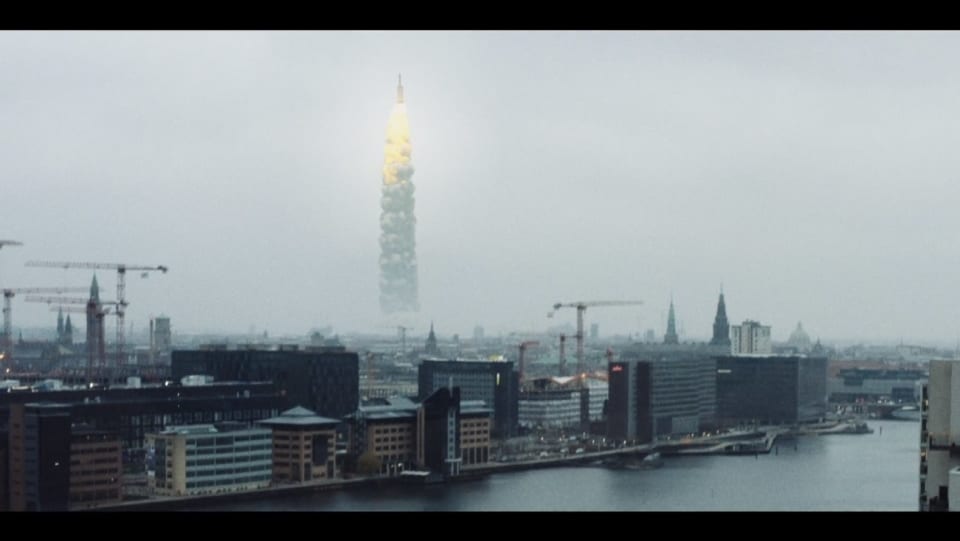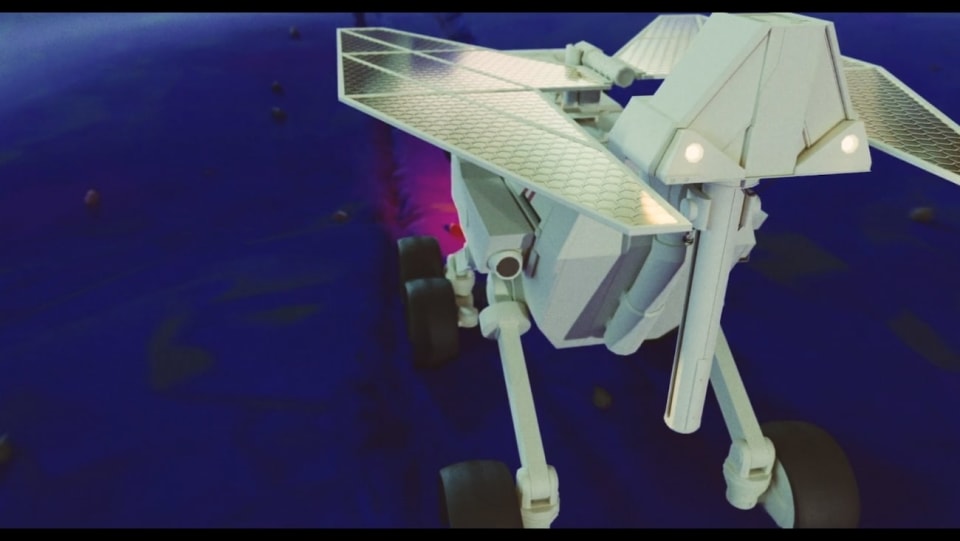How Sony Music Uses Blender 3D
· By Johnson
We're having a chat with Christoffer Kondrup from Sony Music. He is using Blender on a daily basis, and recently started using our render farm. We're very excited to help a brand like Sony Music be more productive and meet their deadlines! Let's see what Chris is working on and how he's using Blender!
Hi Chris, to begin, tell us a little about who you are. What’s your role at Sony Music and what’s your background?
My name is Christoffer, I’m 25 and working full-time as an editor and VFX-artist, my work mostly consists of music videos, but I also create live-performance visuals and social media content for various artists at Sony. I started out as a self-taught freelancer, working on mainly commercial products like advertisement, but also fiction. I then attended The European Film College, where I honed my editing skills among others. I was then picked up by Sony Music Flow.
At Sony we’ll often be working on multiple productions per week, meaning that I personally have to juggle between being an on-set supervisor, camera assistant, editor and CG artist
What kinds of 3D projects do you work on? Any renders or projects you can share with us?
Usually when I do 3D it will be for large projects, mainly meaning music videos. Traditionally this would be the only projects with budgets large enough to compensate for the expensive post-production that VFX entails, but due to being an in-house VFX artist and due to the increasing accessibility of powerful workstations and external rendering-solutions like Blendergrid, we are increasingly adding VFX to smaller scale productions like album-trailers or even social media content. Most recently I’ve inserted a SpaceX rocket in the sky above Copenhagen and concurrently created a 3D short film, both for use in the teasing of a major hip-hop album.

How do you use Blender in your workflow? Are there any other tools that you use in conjunction with Blender?
I use Blender both for visual effects and occasionally for full 3D scenes. For compositing I like to use After Effects and DaVinci Resolve as they offer fast and efficient tools for this. And as I’m usually both the editor and VFX artist, I finalize in Premiere Pro.
Blender quickly became the obvious choice when picking out what software to expand my VFX capabilities in.
What made you/your team pick Blender over other tools?
As I’m a self-taught filmmaker and computer-geek, many hours have been spent scouring the internet for useful and affordable tools that would better my abilities and Blender quickly became the obvious choice when picking out what software to expand my VFX capabilities in. The extensive online-community that Blender has acquired through the years, thanks to its freeware accessibility, has made it second-to-none when it comes to free online-courses, forums and many other things that simply aren’t as accessible when working with the VFX software which as of yet is more popular within the industry.
In your time using Blender at Sony Music, what’s an important feature that you’ve heavily relied on? And on the flip side, what’s something missing in your workflow?
I’d like to say that Blender fulfills all of my true 3D needs. As I’m quite prolific in After Effects, I still like to use this for smaller graphical assignments, but as soon as I’m in need of true 3D elements I will either go make these myself in Blender or find them online and sometimes when the budget isn't there, I’m usually still able to find something within my price range. And this again boils down to Blenders massive online community, thanks to it being free, loads of people are practicing at home, creating loads of material for you to use in your renders.
How do you use Blendergrid? Is most of your work rendered in Cycles?
I’ll mostly do renders in Cycles as true raytracing is needed when I do VFX that has to apply to real footage, but I’ll also do Eevee when working on less realistic graphical elements like logos or other things. But as of late, I’ve been seeing many people able to do absolutely fantastic and photorealistic things with Eevee, so lately I’ve been looking into this myself as being able to do photorealism in Eevee would greatly increase my output.

I can imagine working in the music industry is pretty fast paced at times, what kind of challenges do you deal with (technical or creative) and how have you overcome them?
At Sony we’ll often be working on multiple productions per week, meaning that I personally have to juggle between being an on-set supervisor, camera assistant, editor and CG artist, and on top of that we’ll frequently have extremely narrow turnarounds meaning we might shoot something on a Monday, which we’ll be delivering finals for on the subsequent Friday.
Anyone who knows post-production and especially 3D and CGI, will know that this is an extremely short delivery-time and due to this I’m extremely reliant on the external services I use to be quick and fail-safe. And my favorite external service that I use, is without a doubt Blendergrid, which has assisted me multiple times with my renders which I’ll frequently have them do just hours before my deadlines. And on occasion, when I’ve had issues with my renders, Blendergrid has always risen to the task and made sure I’d have my material in due time and looking the way I intended.
Blendergrid has always risen to the task and made sure I’d have my material in due time and looking the way I intended.
Blender has evolved a lot in the last couple release cycles, how have you kept up with the changes? Have they helped your workflow?
I’ve been quite happy with the rendering updates coming through Blender recently, Optix was an amazing addition to my workflow which permitted me to work a lot faster thanks to my Nvidia-based hardware. And I simply cant wait for CyclesX to hopefully speed it up even further.
What’s next for you?
I’ll be honing my skills in 3D even further, even though I am working professionally with Blender at the moment, the CG artist profession itself is just one of endless possibilities and things to specialize in. Next on my Blender-Agenda will probably be honing simulation-skills and photogrammetry-based modelling and texturing.
Thanks for talking with us Chris!
Find more of Chris' work at Sony Music: www.sonymusic.dk